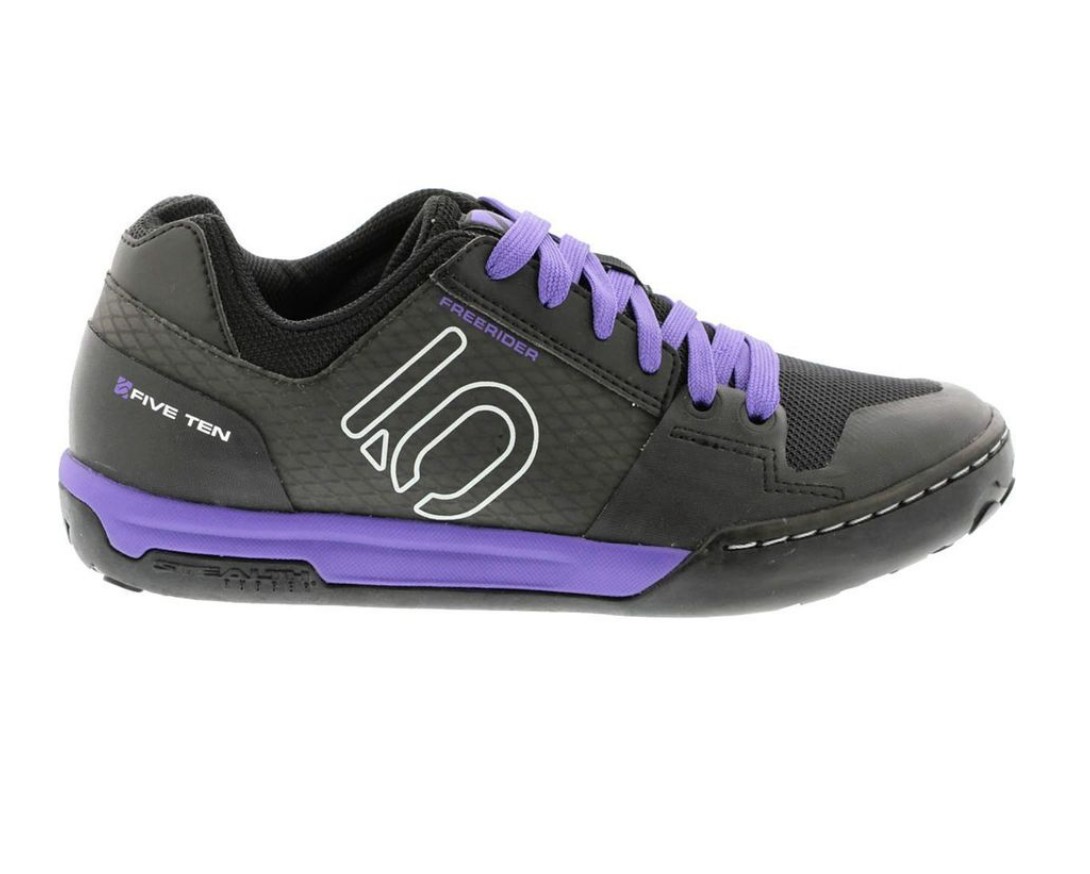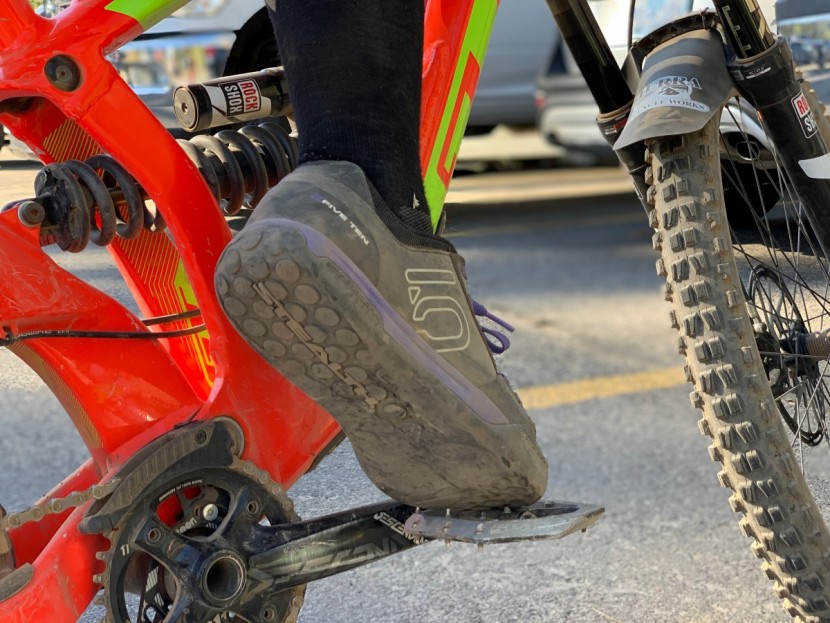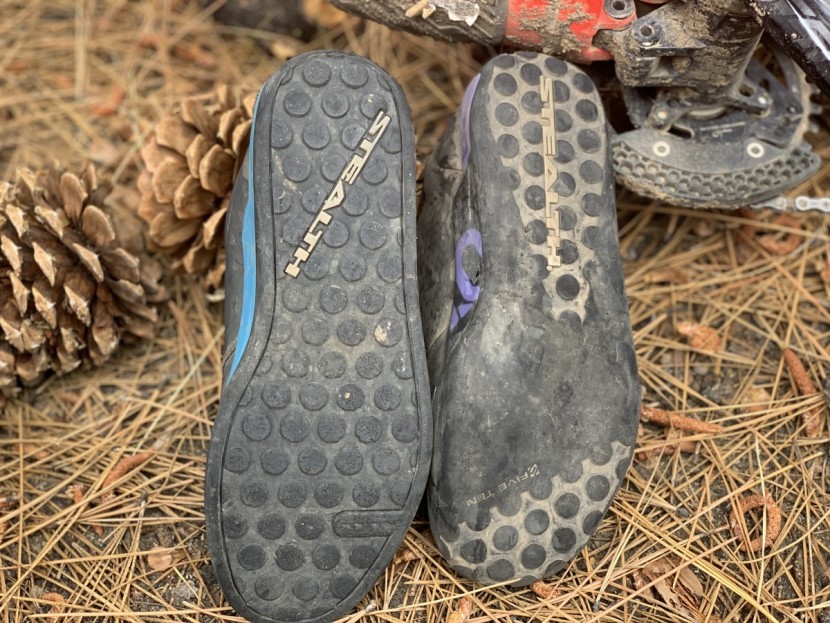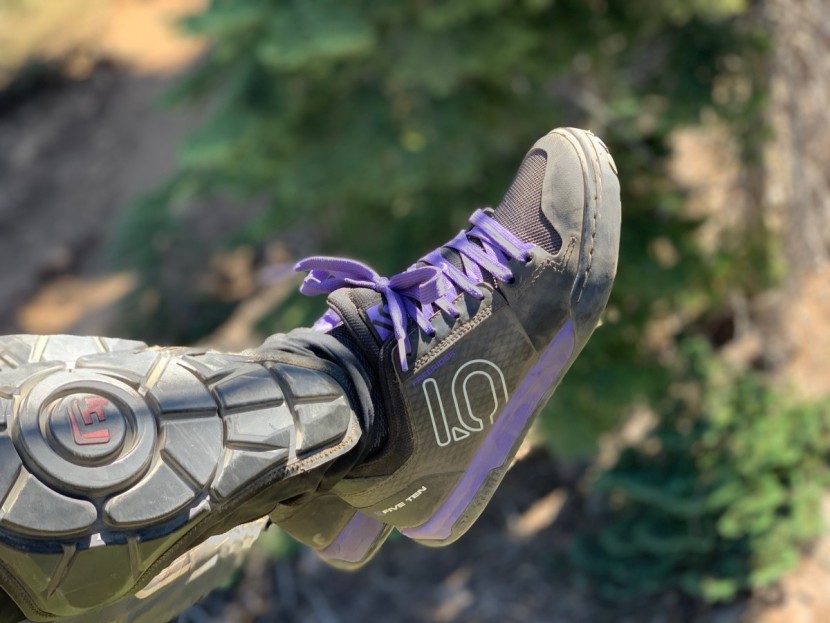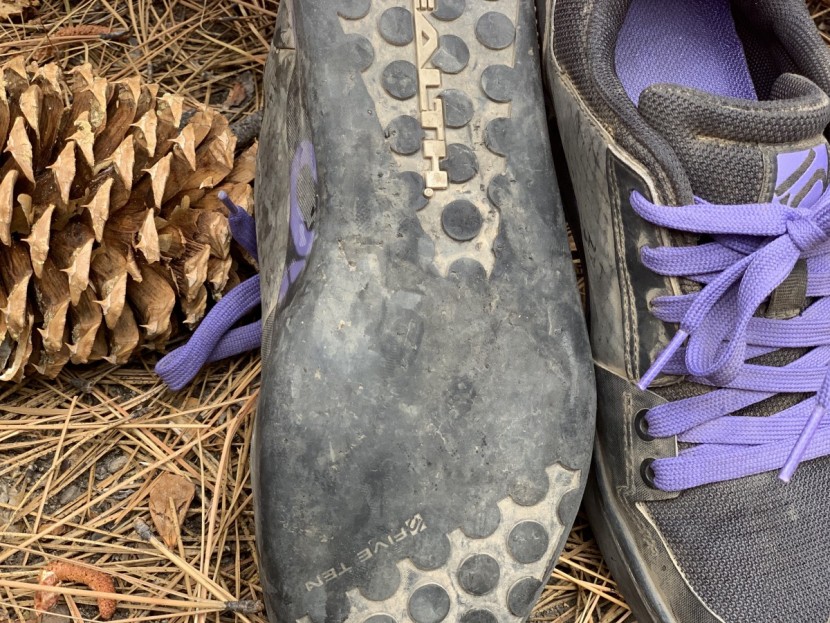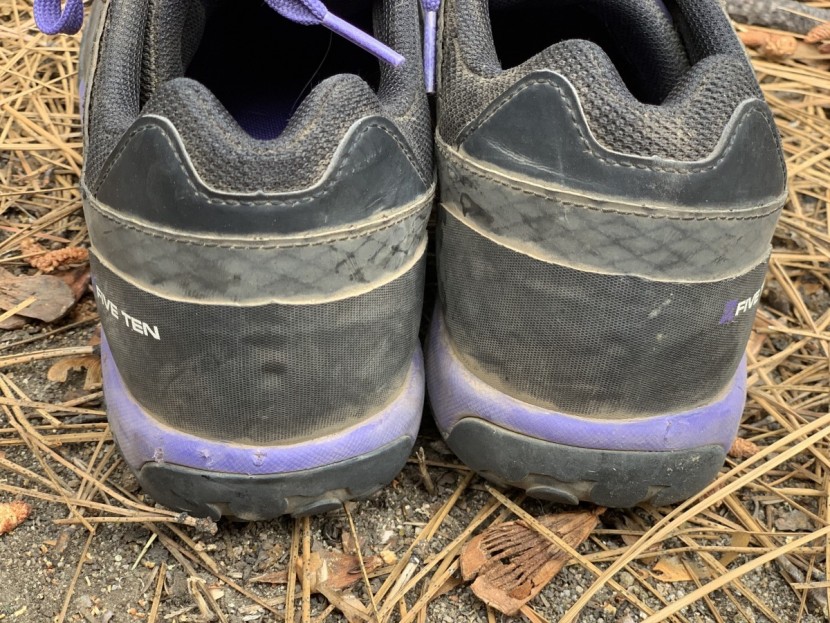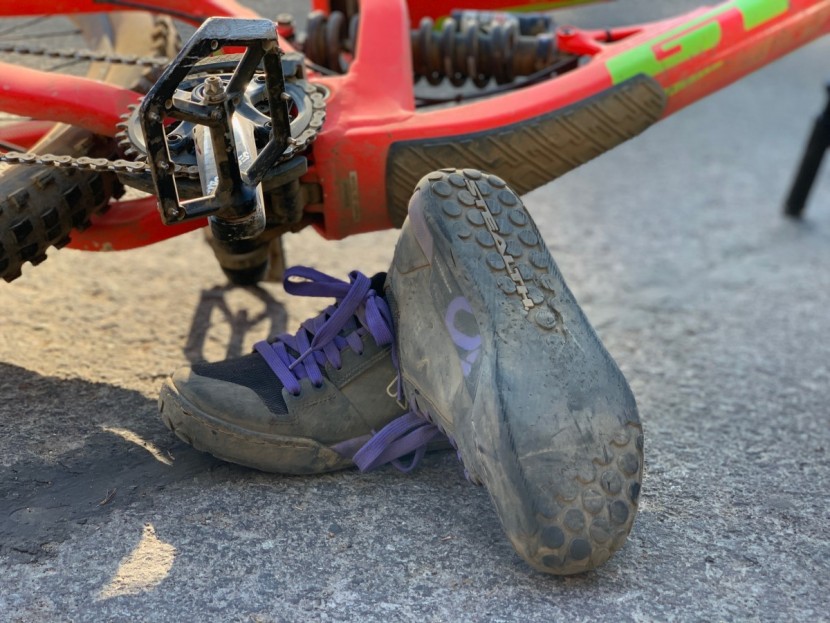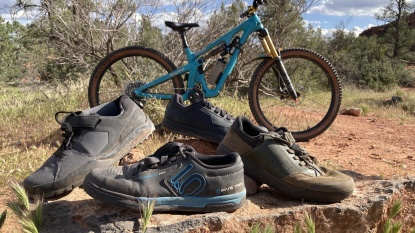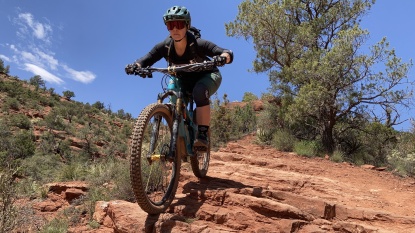Five Ten Freerider Contact - Women's Review
Our Verdict
Our Analysis and Test Results
What makes Five Ten Freerider Contact stand out from other mountain biking shoes is the area of smooth tread on the ball of the foot. We were very excited to try out this different type of tread!
Grip
What makes these shoes super unique is the tread on the bottom, only part of the shoe has Five Ten usual dot pattern. On the ball of your foot (the part of your foot you want on the pedal) is a smooth rubber. We were skeptical about its effectiveness because that part of your foot is where you want most of your grip — our skepticism was not unwarranted. We found that our foot consistently slipped off the pedal the first few rides. After that, the scarring in the sole helped create some texture, so our foot did not move as often. Why wouldn't Five Ten add that texture themselves? Five Ten aimed to make this shoe for someone who wants more room for movement on their pedal. However, in comparison to other models we tested, we found that Contacts scarred much more quickly, making the tread for you. We also found the slick bottom side to be pretty slippery in wet weather and when we had to hike our bike. But if you are looking a shoe with medium grip, this is perhaps the shoe for you.
Comfort and Protection
On the toe, the rubber on the bottom of the shoe is sewn to the upper. We could feel that seam on our toes when the shoe was on. The seam on the inside was so large that when our toe moved forward in the shoe, it hurt. On other shoes we tested with seams, this was not a problem.
We did find there is a lot of protection on the toe of the shoe to protect your foot from rocks, trees, or even your pedal. This protective layer did a great job of shielding our foot.
We found that these shoes run a half size small compared to the other Five Ten's we tried in the same size. The fit is also narrow with a low profile.
Rigidity and Power Transfer
The Contacts feature a very stiff toe and mid-sole, so rigid that we found it challenging to feel the pedal underfoot. We think that because of the stiffness this is not a good option if you have to hike your bike. If you are looking for something with a little more flexibility, we recommend looking at other models we tested.
Breathability
The upper is mostly synthetic mesh, and on the part of the shoe, there is a waterproof overlay on the mesh. Thus, Five Ten was able to make a waterproof shoe while also maintaining breathability.
Durability
Just like on the other Five Ten shoes we tested, the stealth rubber scarred easily from the pegs on our pedal. Also, the stitching on the front of the shoe started to become frayed only after a few uses. Lastly, the laces are also quite large, and there is no elastic loop to keep them in place, making them an easy target for our chainrings to catch.
Weight
Of all the shoes we tried, the Freerider Contact fell right in the middle weighing in at 713 grams. The weight helped keep us on the pedal and made up for the smooth tread a little. However, we think some of the Five Ten models that weigh less are a better option.
Value
After the break-in period, these shoes did get a bit better, but we still do not think they are worth the price tag compared to the other Five Ten shoes. These do not have an elastic strap to keep the laces out of the way. We found other Five Ten models that are slightly more expensive to be a better option.
Conclusion
Breathability is where the Freerider Contact stands out. Otherwise, we found this shoe to pale in comparison to its other Five Ten family members. It did not have the elastic strap to hold our laces, and the seam on the front dug into our toes on the inside of the shoe.


